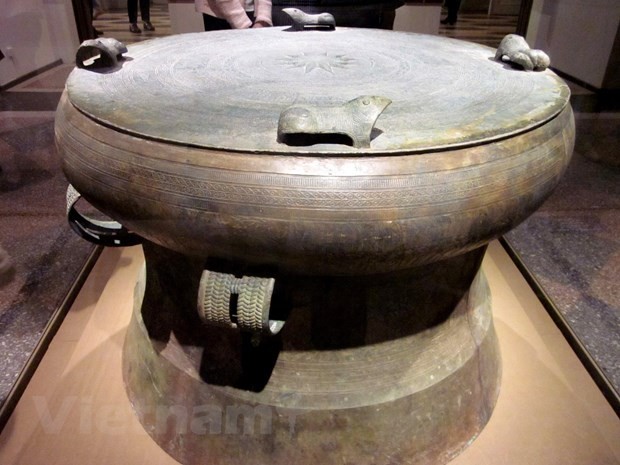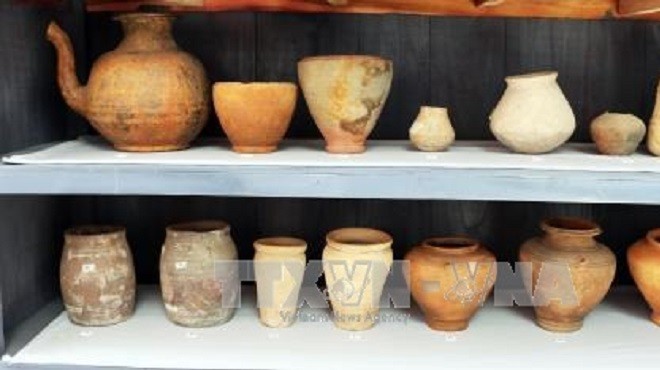(VOVWORLD) - An exhibition of antiques representing the different civilisations of Vietnam opened at the Hermitage Museum in St. Petersburg last Friday. It is one of several activities organized to celebrate the Vietnam Year in Russia.
 Dong Son bronze drum, a highlight at the exhibition (photo: Le Hang/Vietnam+) Dong Son bronze drum, a highlight at the exhibition (photo: Le Hang/Vietnam+)
|
The exhibition entitled “Treasures of the Red River” introduces 300 objects of Vietnam’s 3 major cultural centers – the Dong Son culture in the north, the Sa Huynh culture in the centre, and the Đng Nai and Oc Eo culture in the south.
The State Hermitage Publishing House has prepared a scholarly illustrated catalogue for the exhibition with forewords by Mikhail Borisovich Piotrovsky, General Director of the Museum, and Nguyen Van Cuong, Director of the Vietnam National Museum of History. Piotrovsky says the exhibition gives the people of Saint Peterburg an opportunity to look deeply into Vietnam’s history and see how the Vietnamese people conquered nature and developed production and art over thousands of years.
 Pottery containers Pottery containers
|
The Dong Son culture dominated the valleys of the Red, Ma, and Ca rivers from 2500 BC to the first century AD, producing artefacts made of stone, bronze, iron, clay, glass, wood, and ivory. The most characteristic are highly artistic cast bronze items – work tools, household utensils, weapons, and musical instruments.
At the same time the Dong Son culture was developing in the north, the Sa Huynh culture was developing in Vietnam’s central region. Sa Huynh is known primarily for its funeral offerings. Remarkable jewelry, ceramics, and other objects have been found in ancient tombs here.
In the Mekong Delta, the Dong Nai culture, known for its iron and pottery objects, dates back 2,500 years.
The Oc Eo culture arose in the south-western part of the Mekong Delta from the first to the sixth century. In addition to the usual artefacts of daily life, archeological sites here have yielded unique fired pottery, seals, and coins.
The St. Petersburg exhibition acknowledges the many foreign archaeologists who have studied Southeast Asian history. In the 1950s the first generation of Vietnamese archaeological researchers appeared. A significant contribution to the investigation of Vietnamese antiquities has been by former Soviet and Russian specialists, who continue working there to this day.